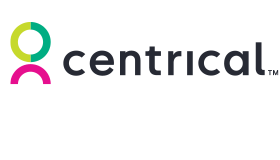Contact centre performance management on its own isn’t enough in today’s market – organizations must continually optimize their processes, train and develop their agents, and work to stay one step ahead of the competition and rising customer expectations.
In this article, we’ll discuss the basics of contact centre performance management, including common key performance indicators (KPIs), optimization best practices, and some key takeaways.
What Is Contact Centre Performance Management?
Contact centre performance management involves the strategic supervision, guidance, and optimization of call centre activities to ensure efficiency, productivity, and customer satisfaction.
By leveraging innovative contact centre performance management techniques, operations managers can streamline processes, enhance agent performance, and ultimately elevate the customer experience, leading to increased customer loyalty and business growth.
The Importance of Contact Centre Performance Management
Contact centre performance management is crucial in delivering operational excellence and exceptional customer experiences (and building satisfaction and loyalty) with seamless interactions and fast resolutions.
By leveraging centre performance management strategies and tools, businesses can track agent performance, areas of improvement, process inefficiencies, and training and development opportunities.
Key Metrics and KPIs for Contact Centre Performance Management
Key metrics and KPIs for contact centre performance management will often include:
First Call Resolution (FCR):
This is the percentage of customer issues resolved during the initial interaction with an agent. A high FCR indicates efficient problem-solving – and minimal customer frustration.
Average Handling Time (AHT):
AHT tracks the average time it takes for an agent to handle a customer interaction start-to-finish, including talk time, hold time, and after-call work.
Customer Satisfaction (CSAT):
CSAT gauges customer satisfaction through post-interaction surveys, providing insights into the quality of service and areas for improvement.
Net Promoter Score (NPS):
NPS measures customer loyalty and overall brand sentiment by asking about the likelihood that customers would recommend the company to others.
Abandonment Rate:
This is the percentage of callers who hang up before reaching an agent. A high abandonment rate could mean there are signal wait times, inadequate routing strategies, or staffing issues.
Contact Quality:
This measures the quality of interactions through monitoring and evaluation, and ensures that agents follow best practices and deliver consistent service.
Self-Service Utilization:
By tracking the percentage of customers using self-service options, such as FAQs or chatbots, contact centres can measure their effectiveness, potentially alleviating agent workload.
Escalation Rate:
This metric measures interactions that need to go to higher-tier agents or supervisors and indicates gaps in agent skills and knowledge.
How to Optimize Your Contact Centre Performance Management
Optimizing your contact centre performance management is key to delivering exceptional customer experiences and driving business growth – and there are many steps that contact centres can take.
First, establish (and communicate) clear performance metrics that include the full scope of the contact centre and are aligned with business goals. Regularly track and analyze these metrics with the right call centre performance management tools.
Be strategic in your approach to contact centre performance management and focus on key areas of improvement. Utilize advanced call centre performance management software that provides real-time performance insights.
Continuously train and empower your agents to handle interactions efficiently and confidently. Consider implementing AI-powered microlearning as part of a robust learning and development program and including social elements such as employee contributions to build a culture of learning and collaboration among agents and supervisors.
Leverage advanced gamification, which is an increasingly common tool for contact centre performance management. Gamification keeps employees motivated to meet their goals and engaged in their daily work, as well as offering learning and development initiatives.
Delegate routine, low-lift inquiries to automated, self-service technology. Using technology, such as AI, helps contact centres free up agent time and increase availability for more complex inquiries.
Customer expectations are growing and shifting – and contact centres need to keep up! Review industry and customer trends on a regular basis, updating your processes and workflows.
Finally, one critical cornerstone of contact centre performance management is to create a people-centric, positive work environment that motivates and engages agents, supports their well-being, and enables them to deliver an improved customer experience.
Continuous Improvement and Performance Evaluation for Contact Centre
Continuous improvement and performance evaluation for the contact centre are essential in today’s dynamic landscape.
One way to continuously improve performance evaluation is to examine quality assurance (QA) processes. These processes tend to be static, and transactional and lack a dynamic, meaningful feedback loop.
As part of a truly effective contact centre performance management initiative, consider updating these processes.
Elements such as flexible, customizable forms, dynamic feedback loops, and a “single pane of glass” that offers real-time performance insights to both supervisors and agents.
Case Studies and Success Stories
Once success story of contact centre performance management is that of Microsoft. The company wanted to ensure that their agents were aligned, engaged, and highly proficient to provide the best possible customer experience.
After implementing Centrical as part of their global network of contact centres, the company saw results:
- 12% less absenteeism
- 10% more calls per shift
- 89% of agents acknowledge their newly learned information and can apply it to their work
Through implementing elements such as microlearning and personalized goals as a part of their contact centre performance management, and tying the experience together with gamification, Microsoft was able to engage agents, connect them to their work, and drive desired behaviors that led to real business results.
Summary and Key Takeaways
We’ve just covered some basics around contact centre performance management, key metrics, some best practices, and success stories. Below are a few key takeaways:
With the almost-meteoric rise in customer expectations, contact centre performance management is an increasingly critical cornerstone to business success.
It is essential to have the right call centre performance management software, tools, metrics, and practices in place. Companies should also follow customer and industry trends and adjust their strategy and practices accordingly.
Contact centres should review their QA processes as part of optimizing contact centre performance management, examining elements such as evaluation forms, feedback loops, and score/performance transparency.
Implementing elements such as continuous agent training, automated and self-service options, and taking a gamified approach to the employee experience can further help optimize contact centre performance management.
This blog post has been re-published by kind permission of Centrical – View the Original Article
For more information about Centrical - visit the Centrical Website
Call Centre Helper is not responsible for the content of these guest blog posts. The opinions expressed in this article are those of the author, and do not necessarily reflect those of Call Centre Helper.
Author: Centrical
Published On: 2nd Oct 2023 - Last modified: 9th Dec 2024
Read more about - Guest Blogs, Centrical






 Centrical provides a real-time performance management, microlearning, gamification, coaching, and voice of the employee platform for frontline teams. The solution inspires and personally guides employee success and growth by making every moment actionable.
Centrical provides a real-time performance management, microlearning, gamification, coaching, and voice of the employee platform for frontline teams. The solution inspires and personally guides employee success and growth by making every moment actionable. 








